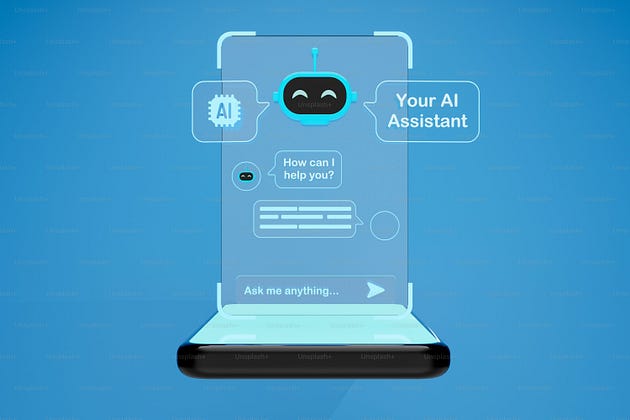AI Chatbots and Kids’ Mental Health: A Helping Hand or a Risky Path?

Consider this: When your child feels upset after school, they turn to an AI chatbot for some comfort rather than sharing with you or a friend. They write out their emotions, and a kind virtual friend replies with words of support in a matter of seconds. Doesn’t that sound futuristic? This is already taking place, though. AI chatbots are starting to appear in children’s lives providing them with advice on mental health as well as emotional support and assistance. However, as we accept this new reality, a crucial question remains: are these chatbots assisting children, or are they putting them in danger?
Without a doubt, AI chatbots can provide reassurance. They offer quick feedback, are accessible around-the-clock, and do not pass judgment. These digital assistants may appear like a savior for children who have trouble expressing their feelings or who lack a strong support network. AI-powered dialogues may even aid in children’s emotional regulation development, according to certain mental health experts. Conversely, can a chatbot ever fully take the role of interpersonal communication? What if children grow overly reliant on technology for emotional support rather than learning how to interact with people in real life?
As parents, caregivers, and educators, we want the best for our kids. We want kids to feel cared for, understood, and emotionally adaptable. However, before we completely accept AI chatbots as a solution for children’s mental health, we must tackle the challenging questions: Are these technologies created with children’s best interests in mind? How do they deal with sensitive emotions? Most importantly, do they empower children or encourage a false feeling of connection? Understanding AI chatbots’ benefits and potential risks for children’s mental health is critical to ensure their responsible and successful use.
So, let us dive into the topic together! This article will look at all sides of the AI chatbot debate — how they can help, where they may fall short, and what parents should think about before allowing their children to use them. Whether you are excited about this technology or hesitant, one thing is certain: AI chatbots are here to stay, and it is up to us to figure out how they will fit into our children’s emotional lives.
The Upside: How AI Chatbots Can Support Children’s Mental Health
A Safe Space for Kids to Open Up
Children are not always comfortable communicating their feelings with parents or friends. AI chatbots offer a judgment-free environment in which children can express themselves freely. According to a University of Cambridge research published, Dr Nomisha Kurian provides evidence that children are especially vulnerable to viewing AI chatbots as lifelike, quasi-human confidantes, and that their interactions with the technology can frequently go wrong when it fails to address their specific needs and weaknesses. This shows that technology may promote emotional openness. However, relying strictly on AI may hinder further emotional development.
24/7 Emotional Support at Their Fingertips

Unlike humans, AI chatbots are always ready to listen and reply. This can be beneficial for children who are feeling stressed or lonely at unusual hours. A review evaluates the characteristics, effectiveness, and challenges of AI chatbots to tackle mental health issues among students by connecting findings from current studies. These technologies improve access to mental health resources, eliminate judgment, and provide constant support. Chatbots should supplement, not replace, human care. Instant access to comfort is ideal, but it should not be the only option.
Teaching Kids Healthy Coping Strategies
Many artificial intelligence chatbots do more than just listen; they also lead children through stress-relieving activities. These include breathing exercises, journaling prompts, and positive affirmations. While they can help encourage positive behaviors, they lack the personal touch that a therapist or mentor provides. Kids require real-world experiences to develop emotional resilience. AI can be useful; however, it is not the solution.
The Risks: Where AI Chatbots May Fall Short
Can Chatbots Understand Human Emotions?

AI chatbots mimic human conversation but do not truly “feel” emotions. Their responses are based on algorithms, not genuine understanding, which can lead to advice that feels generic or lacks real empathy. Children may mistake programmed responses for real care, affecting their ability to form deep connections. While AI can provide support, it cannot replace human warmth.
Over dependence on AI for emotional support.
Using AI for occasional support is good, but relying on it all the time is worrying. Research has demonstrated that excessive use of online technology or digital media can substitute daily offline connections with others and time in different settings, which has a negative influence on mental health. Children must learn to negotiate both real-life and digital relationships.
Privacy and Data Concerns

Chatbots collect data to better their responses, but where does that information go? Many platforms record interactions, prompting concerns about privacy and security. Parents should review data policies to ensure that their child’s information is protected. Children should also be taught digital boundaries — what is appropriate to share and what is not.
What Parents Should Consider Before Letting Their Child Use AI Chatbots
Finding the right AI chatbot
Not every chatbot is intended for mental wellness or child safety. Some provide emotional support, while others are simply casual chat bots. Parents should look for credible platforms, ideally those backed by child psychologists. Choosing the correct chatbot ensures that children receive appropriate and secure support.
Encourage Real-World Communication
While chatbots can provide useful insights, nothing can replace human interaction. Children should be encouraged to share their feelings with their parents, teachers, or friends. Open interactions at home help children build emotional resiliency. Meaningful relationships should be enhanced by AI, not replaced by it.
Setting Healthy Boundaries
AI chatbots should enhance, not replace, human engagement. Setting usage limitations can help to avoid dependency and encourage real-world connections. Parents should also monitor chatbot conversations to ensure that children receive positive guidance. Balance is essential — technology should improve, not destroy emotional well-being.
Final Thoughts: Finding a Healthy Balance

AI chatbots can be a useful tool for children, providing support and teaching coping methods, but they should never replace real-life human connections. As parents and caregivers, it is critical to establish limits, select safe platforms, and promote open discussions about AI. By remaining involved, we can help children utilize technology in a way that promotes their emotional well-being. For additional information, see AI Risks to Children, A Quick Guide for Parents. Together, we can develop a balanced strategy in which AI complements rather than replaces real-life connections.
Leave a comment